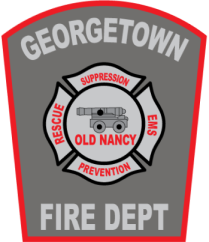Chief Fred A. Mitchell Jr. and the Georgetown Fire Department Fire Department wish to remind residents to test their smoke and carbon monoxide alarms and check the batteries in each when they move their clocks ahead to start daylight saving time Sunday.
“Working smoke and carbon monoxide alarms are vital during an emergency, ensuring that you and your family are able to leave your home quickly and safely,” Chief Mitchell said. “Be sure to test your devices this weekend and replace the battery or device if needed.”
Daylight saving time begins at 2 a.m. Sunday, March 14, and clocks move ahead one hour at that time.
According to the National Fire Protection Association (NFPA), in more than 50% of home fires that were reported to fire departments in the U.S. between 2014-2018, residents were alerted to the danger by a working smoke alarm. Almost 60% of home fire deaths occurred in homes without properly-functioning smoke alarms or no smoke alarms at all during the same time period.
Fire departments nationwide responded to almost 80,000 carbon monoxide incidents in 2016, and almost 400 people died of unintentional carbon monoxide poisoning in 2017, according to NFPA data.
To keep residents’ homes safe and prevent fires or carbon monoxide poisoning, Chief Mitchell recommends these safety tips from the NFPA:
- Test all smoke alarms at least once a month, pressing the test button to ensure the alarm functions properly.
- Smoke alarms with non-replaceable 10-year batteries are designed to remain effective for up to 10 years. If the alarm chirps, warning that the battery is low, replace the entire smoke alarm right away.
- Alarms with any other type of battery need a new battery at least once a year. When you change your clocks, also replace regular batteries in smoke and carbon monoxide alarms.
- Smoke alarms have a shelf life of 10 years. Be sure to replace them after 10 years of use.
- CO alarms should be replaced according to the manufacturer’s instructions.
- Smoke alarms should be installed in each room of the house. CO alarms should be installed in a central location outside each bedroom or sleeping area, on every story of the home and in other locations required by standards, codes or laws.
- Make sure alarms interconnect so when one alarm sounds, they all do.
- If the CO alarm sounds, immediately exit the house or building and move outside to an area of fresh air, ensuring each person inside the home is accounted for. Then call for help and await instructions from emergency personnel.
- Working with each member of the household, create and practice a home escape plan.
For more information on smoke and carbon monoxide alarm safety, visit the NFPA website or contact the Georgetown Fire Department at 978-352-5757.

